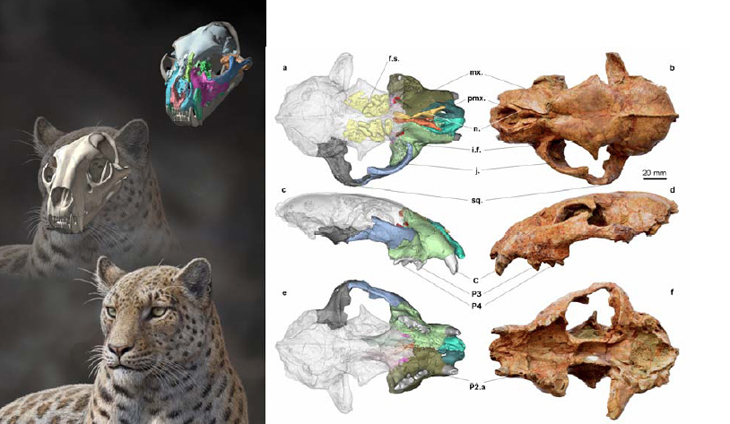Tibet may be ancient home of big cats

A fossil skull discovered in Tibet belongs to a cat species closely related to snow leopards like this one and could belong to an ancestor of all the big cats.
asterix611/Flickr
- More than 2 years ago
Most continents, except Antarctica and Australia, have their own big cat species or had them in the past. In the Americas, it’s the jaguar and the extinct American lion. Africa has its lions and leopards. Depending on where you are in Asia, you might find tigers, leopards, snow leopards or clouded leopards. And from northern Africa to Europe, Asia and Alaska, there are remains of another extinct lion, the European cave lion.
But where did the big cats get their start? A fossil skull and teeth discovered in 2010 and described this week in the Proceedings of the Royal Society B has scientists thinking that the big cats’ ancestor lived in Tibet.
Figuring out where first big cats came from has been rather troublesome because of fossils — there just aren’t many of them. Scientists have used analyses of cat DNA to create kitty family trees, but those don’t really match the few fossils on hand. Specifically, there are several 3.8-million-year-old fossil bits of big cat teeth found in Tanzania that throw everything off.
This new fossil, discovered in a remote area of the Himalayas in Tibet near the border between Pakistan and China, is older than the African fossils — an estimated 4.42 million years old. The skull belonged to an adult cat that was closely related to the snow leopard but about 10 percent smaller and had enough unique characteristics that it belongs in a new species, Panthera blytheae.

The research team, led by Jack Tseng, now a postdoc at the American Museum of Natural History in New York City, created a new big cat family tree using a combination of traits, including behavioral and morphological characteristics and mitochrondrial DNA. The clouded leopard was an outlier, appearing to have split off first from the big cats’ common ancestor nearly 16 million years ago. Then several million years later, a group of three cats — P. blytheae, the snow leopard and the tiger — branch off. A bit later, a second group — the jaguar, leopard, lion, American lion and European cave lion — branches off and spreads out.
Given this data, the big cats must have gotten their start in central or northern Asia, probably Tibet, the researchers say. The exact timing of when all the species evolved and spread around the world, however, will have to wait for more data. There still aren’t enough fossils.
In addition to insights into the big cat family tree, the discovery of the P. blytheae skull also gives clues about snow leopard ecology. Snow leopards are fierce hunters that can bring down animals that are three times their size. Their prey includes blue sheep and a Tibetan antelope called the chiru. Fossil evidence indicates that these animals have been found in the Zanda Basin, where the new fossil was discovered, for as long as the cats. The environment there hasn’t changed much either; millions of years ago the region was “dominated by open, arid areas accentuated with steep cliffs formed by protruding basement rocks like those observed today,” the researchers note. “The present-day ecology of cold-adapted snow leopards and their prey has roots that can be traced back for several million years,” they say.
How much longer that ancient relationship lasts, well, that’s up to us. The blue sheep is fairly abundant, but the snow leopard — a victim of poaching and a dwindling habitat — and the chiru — hunted for its fur — are both listed as Endangered by the IUCN Red List.






